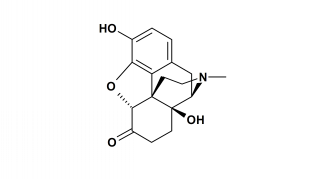Patients searching for alternative pain-management therapies may soon find comfort in the form of a novel gel-matrix-based, extended-release, oral dosage form. Late last quarter, partners Penwest Pharmaceuticals Company (Patterson, NY) and Endo Pharmaceuticals (Chadds Ford, PA) received an approvable letter from FDA for their "Oxymorphone ER" tablets. The drug is currently under agency review for the treatment of moderate to severe pain; in particular, the pain related to the advanced stages of cancer and cancer progression.
The approvable-letter announcement came less than five months after the companies released data from Phase III clinical trials involving 44 cancer patients who required opioid analgesics--the strongest medication currently used for cancer-related pain management. According to Jennifer Good, senior vice-president and chief financial officer at Penwest, results of that study show that Oxymorphone ER, an opioid analgesic, provided pain relief equivalent to oxycodone controlled-release at half the milligram dose.
If approved, the drug would be the latest development founded upon Penwest's proprietary "TIMERx" controlled-release platform. Already the basis of tour marketed products, the TIMERx technology consists of an agglomerated, hydrophilic complex that, when compressed, forms a controlled-release matrix. The matrix, consisting of xanthan and locust bean gums (two polysaccharides) combined with dextrose, surrounds a drug core. In the presence of water, interactions between the matrix components form a tight gel while the inner core remains unwetted. The drug is encapsulated in the pores of the gel, and as the matrix travels through the patient's digestive system, the tablet swells and begins to erode. This erosion allows the drug to "back-diffuse" out through the gel-matrix at a controlled rate until the matrix erodes and a majority of the drug is released.
The fundamental component controlling the rate of release lies in the properties of the gel matrix. As Good explains, "Controlling the strength of the gel and the different pores within the gel is essentially the way we are able to either open it up or hold release back." Multiple factors play a role in the release profile. "There are several nuances to the technology," says Good. "The ratio of the gums is important because that dictates how long the tablet holds together. Also, the amount of sugar is a factor, as well as whether a functional coating is used."
Predictable controlled release makes the gel-matrix system suitable for various release profiles, including zero-order, first-order, and initial immediate-release kinetics. According to Good, this flexibility is one of the advantages of the technology. However, more important to manufacturers of pharmaceutical solid dosage forms is the technology's ease of manufacture. As Good explains, "The advantage of TIMERx is that it can be manufactured on standard tableting equipment. Unlike other systems such as bead technology, which can be expensive, tedious, and may require dedicated equipment for manufacturing, the TIMERx system can be manufactured on equipment already established at most pharmaceutical companies. This provides a significant cost savings."
Although FDA's approvable letter requests additional clarification and information to confirm the safety and efficacy of Oxymorphone ER, both Penwest and Endo announced it as a positive step toward bringing the drug toward approval and potential commercialization. "The letter addressed several areas, but there was only one comment in the clinical section that said that the agency may have some questions that may require additional trials," notes Good.
Penwest no longer licenses its TIMERx system, instead focusing on advancing its own proprietary compounds and finding strategic partnerships for development and commercialization. Currently, the company has 2-3 projects in later stages of development, with 7-8 projects in earlier stages of preclinical or Phase I studies. In addition, the company is continuing to work on developing other drug delivery mechanisms.
COPYRIGHT 2004 Advanstar Communications, Inc.
COPYRIGHT 2004 Gale Group



